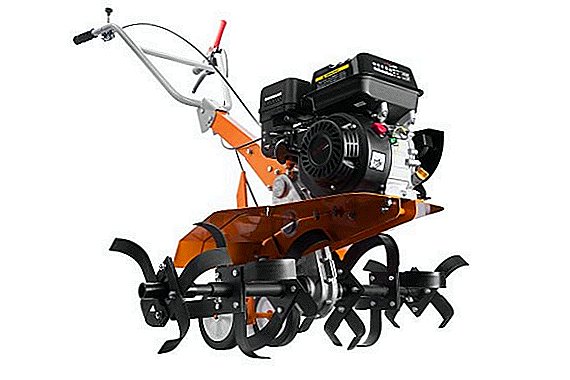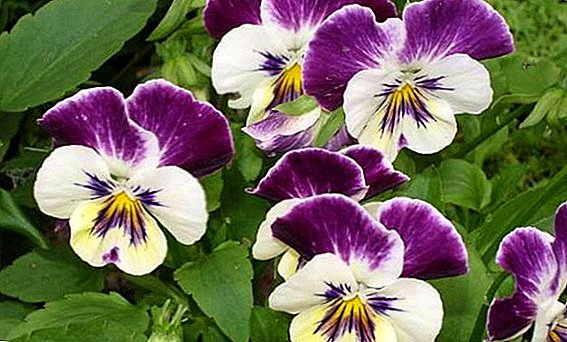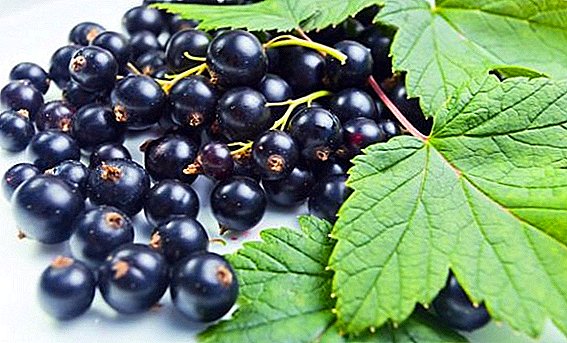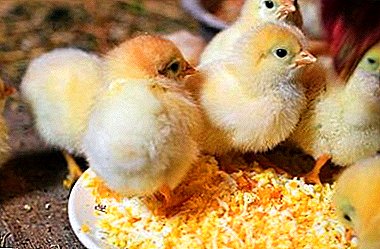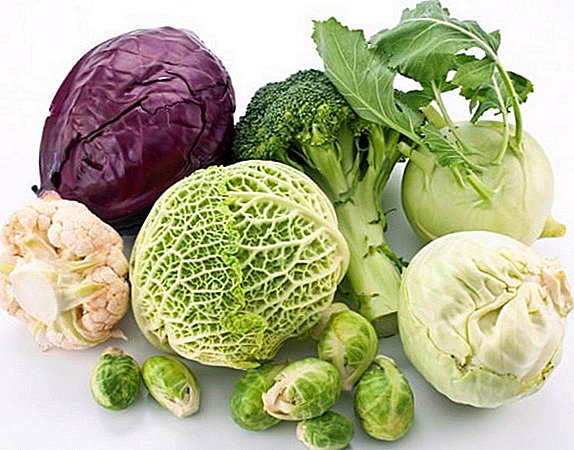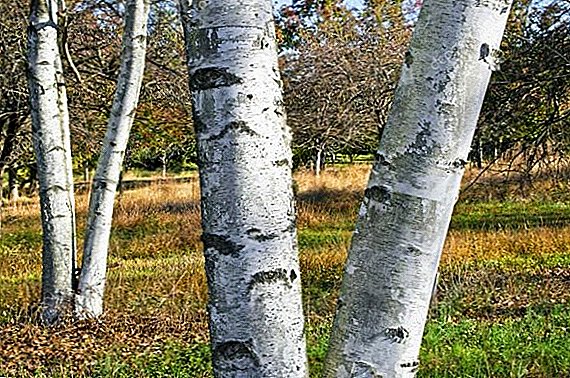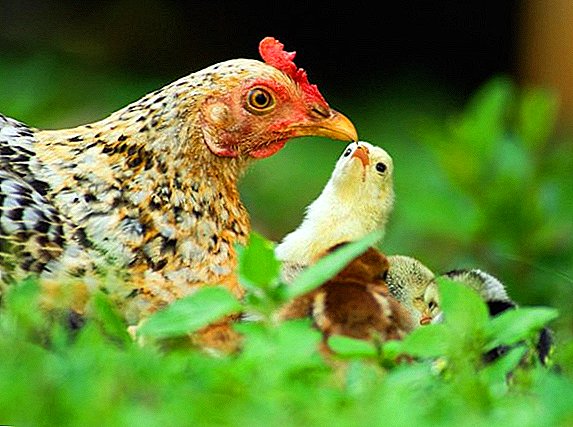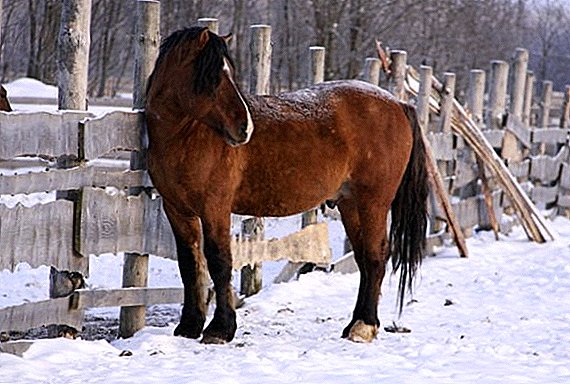 Vyatka horse breed has existed for a long time, and more than once it was declared as missing. However, its representatives were able not only to survive, but to become even more perfect.
Vyatka horse breed has existed for a long time, and more than once it was declared as missing. However, its representatives were able not only to survive, but to become even more perfect.
They are referred to the aboriginal type of horses - these noble, hardy animals will always stand and remain reliable human helpers in the most severe environmental conditions.
Historical data
Vyatka breed got its name from the area where it first appeared - Vyatka province of the Russian Empire. There are several historical versions of its occurrence:
- in the appearance of the breed and the influence on its formation, the role was played by the Livonian clappers, on which the Vyatka territories were conquered by the Novgorodians at the end of the 14th century;
- another version suggests that the breed occurred as a result of the importation of Vyatka on the Vyatka lands by the orders of Peter I;
- The opinion deserves attention, too, that Peter I only continued the work of removing these horses, inherited from his father.
 By the end of the XYIII century, efficient, energetic and hardy Vyatka horses became extremely popular. In harsh winter conditions, laden teams with these horses were able to travel a distance of several thousand kilometers, which made animals indispensable assistants in the postal services and for the transportation of considerable cargo.
By the end of the XYIII century, efficient, energetic and hardy Vyatka horses became extremely popular. In harsh winter conditions, laden teams with these horses were able to travel a distance of several thousand kilometers, which made animals indispensable assistants in the postal services and for the transportation of considerable cargo.Did you know? Before the appearance in Russia of heavy breeds of European origin and a trotter, bred by Count Orlov, Vyatka horses were reputed to be the best harness breed.Several times the breed was on the verge of extinction:
- at the end of the 19th century as a result of its ubiquitous crossing with heavy horses;
- in the seventies of the last century, due to the closure of kennels, information remained only about three uteri and one stallion, after which the Vyatka breed entered the Red Book.

Description
Vyatka horse breed was largely formed under the influence of the conditions of nature in the northern part of Russia, where animals spent most of their time in the stall, but they had to graze on pastures with low grass nutritional properties. Grain horses were not provided enough because of its high cost, so they can be content with simple roughage, consisting of hay harvested in the forest, straw.
Important! The representatives of the breed of plant origin have working qualities that are significantly better than those of the aboriginal, but often they cannot withstand the living conditions of the aboriginal animals.
Exterior, weight, height
The exterior of the Vyatka breed is characterized by such qualities:
- noticeably pronounced harness type;
- Its representatives have a low withers and an extended body with strong and powerful bones and muscles, differing in density and strength;
- their body is distinguished by muscularity and massiveness, while it looks very harmonious;
- scalp is characterized by density. This is especially true for bangs, tail, mane of stallions. The skin of animals is very dense;
- Two-thirds of the representatives have a savor suit of different shades - from white to brown. It is not uncommon also to be dun, mousy, red, bay and brown representatives of the breed;
- A distinctive feature of horses is the presence of a delineated dark strip along the whole ridge, which they adopted along with dark dusting, spots of the back and stripes on the legs from the progenitors - wild horses.

Important! The strap along the ridge and the zebra stripes on the legs above the carpal joint is the main difference between a horse with a sarasa suit. Also a savage horse may differ by the presence of "hoarfrost" (lighter hair) in the mane and tail.Until the 20th century, the Vyatka horses had a height of no more than 1 meter 40 centimeters, today the animals are higher - their parameters are as follows:
- at the withers - 158 cm stallions and 160 cm mares;
- trunk on the scythe - 176 cm stallions and 172 cm mares;
- chest girth - 210 cm stallions and 208 cm mares.
 The appearance of the representatives of the Vyatka breed is as follows:
The appearance of the representatives of the Vyatka breed is as follows:
- head of small size with a straight profile, has a broad forehead and a large lower part;
- ears regular shape, medium size;
- look different kindness and liveliness, the size of the eyes is average;
- the neck is wide, low;
- medium-sized withers are also wide;
- stallions have a crest;
- the backs are rather long and straight, the lumbar region is wide, flat, short;
- chest rounded, medium in width, deep, can be concave;
- the croup is distinguished by muscularity, an oval shape of medium size.
Important! The comb on the neck of the horses is fatty deposits, because of this it is unacceptable that he fell to the side.Short and strong legs of representatives of the Vyatka breed are characterized by durability, they are well developed, their joints are fully adapted for racing. The front legs are set correctly, the hind legs are distinguished by saberiness, have an X-like shape. Sometimes the softness of the headstocks is noticeable on the hind legs, medium-sized chestnuts are also observed on the limbs. Vyatka horses have small darkish hooves.
Character
The purpose of breeding the Vyatka breed was initially to receive a powerful force for the purpose of moving goods for household needs, and not to obtain meat and milk as food. These animals have a soft and not so obstinate disposition as most other thoroughbred horses.  Representatives of this breed are characterized by energy, activity, physical strength and mental stability, they are benevolent, hardworking. Even the harsh climate in which these animals are most often used has virtually no effect on the softness and flexibility of their nature. This is the perfect human helpers.
Representatives of this breed are characterized by energy, activity, physical strength and mental stability, they are benevolent, hardworking. Even the harsh climate in which these animals are most often used has virtually no effect on the softness and flexibility of their nature. This is the perfect human helpers.
Did you know? Horses are able to see color dreams.
Advantages and disadvantages
The horses of the Vyatka breed have a number of advantages, which contributed to the demand for these animals for social and production purposes, and also made of them an attractive option for breeding new horse breeds with high-quality physical capabilities.
The advantages include:
- susceptibility when learning;
- friendly attitude towards others;
- appeasable temper;
- vigor, strength;
- high birth rate;
- good immunity;
- unpretentiousness in nutrition and care;
- excellent well-being in all natural conditions: low temperatures, heat, high humidity;
- the presence of a thick skin that protects against blood-sucking insects;
- endurance, excellent adaptation characteristics;
- economical content;
- high performance;
- lack of fear before barking dogs or the roar of cars, mental stability;
- thick long hair, which makes it possible to keep animals in a herd, even in winter.
 The disadvantages of the modern representatives of the Vyatka breed include:
The disadvantages of the modern representatives of the Vyatka breed include:
- some exterior features: for example, a large head contributes to the lack of harmony in the appearance of the animal;
- Excessive hind legs and their saberiness adversely affect the working productivity of the horse, as well as the performance of the movements;
- Increased withers growth has become some problem in terms of their use for teaching young children to ride.
Important! People who work with horses are twice less likely to get diabetes than others.
Scope of use
Representatives of the Vyatka breed are universal horses. Since ancient times, they were used for harness, especially they were indispensable in winter off-road conditions. To this day, they have remained excellent human assistants in agricultural affairs, for carrying out sowing and assembly work, transportation of goods, and animals perform well during forest hunting.
In modern conditions, the Vyatka horses also do an excellent job with their duties on tourist routes and runs, for teaching children to ride, if the growth of a vyatka is not an obstacle to the implementation of the learning process.  Therapy with horses, especially such good-natured ones, makes it possible to speed up the recovery process for people after suffering nervous and cardiovascular diseases. They are a special gene pool for breeding activities to breed new horse breeds. Often the best representatives of the Vyatka breed occupy top places in equestrian competitions.
Therapy with horses, especially such good-natured ones, makes it possible to speed up the recovery process for people after suffering nervous and cardiovascular diseases. They are a special gene pool for breeding activities to breed new horse breeds. Often the best representatives of the Vyatka breed occupy top places in equestrian competitions.
Rarely they are grown on the face in order to obtain financial profits from the sale of meat.
Important! A horse can heal not only man, but also himself. After a hard day with a massage, it facilitates the work of your heart, improving blood circulation.
Conditions of detention and care
Representatives of the Vyatka breed are absolutely undemanding in content, but to be completely confident in the health of these animals, you need to follow a number of rules on the content:
- the stable must be clean and warm;
- Mandatory is hygiene: washing, bathing, cleaning, combing, wiping with dry and clean towels after physical exertion and other procedures;
- you need to monitor the condition of the teeth of the horse, they should be connected in a straight line, have no cracks, there should be no smell from the mouth, the horse should calmly react to the bit. If you have problems with your teeth, you should consult a specialist;
- animals need to walk (in pens, on pastures);
- to ensure a balanced diet;
- to carry out vaccination and veterinary examinations with the preventive purpose;
- to provide emergency care to a qualified veterinarian when the first symptoms of an animal’s illness appear;
- it is better to cut the horses during the summer period, as the thickness and length of the coat do not allow them to feel comfortable under hot conditions.
 The content of the Vyatka breed for breeding requires the owner to create especially suitable conditions for animals. He must be patient and possess the necessary knowledge in this matter. All the time from fertilization to the appearance of the foal, the mare needs to ensure observation of the veterinarian, as well as a special balanced diet.
The content of the Vyatka breed for breeding requires the owner to create especially suitable conditions for animals. He must be patient and possess the necessary knowledge in this matter. All the time from fertilization to the appearance of the foal, the mare needs to ensure observation of the veterinarian, as well as a special balanced diet.
Read about the characteristics of breeding horses at home.
Breeding representatives of the breed should be kept separately, care and monitoring should be permanent. Also, do not forget about creating conditions for the young.
Animal diet
The horses of the Vyatka breed are undemanding in terms of nutrition:
- fresh grass, in the cold period - dry;
- apples;
- carrot;
- oats, various bran will be an excellent addition to their diet;
- as a delicacy, one should not forget about sugar and dried fruits, which animals gladly eat;
- spring and summer grazing in the meadows with fresh grass.
Learn more about horse nutrition, as well as prohibited foods for these animals.
The first indicator of proper care and nutrition will be a great appearance and good health.  The Vyatka breed respected by many horse breeders continues its development. These faithful, hardworking and unbalanced animals are reliable human helpers in any economic and production affairs, they also manifest themselves as the best companions in entertainment and proven friends in eliminating health problems. Anyone who has encountered them at least once will never forget these good-natured and strong animals.
The Vyatka breed respected by many horse breeders continues its development. These faithful, hardworking and unbalanced animals are reliable human helpers in any economic and production affairs, they also manifest themselves as the best companions in entertainment and proven friends in eliminating health problems. Anyone who has encountered them at least once will never forget these good-natured and strong animals.


